7 Rarest Stones in the World are Gems and crystals that have always held a special allure for humans, particularly when fashioned into exquisite jewelry and other trinkets.
However, geologists and other specialists will tell you that rare stones don’t have to be brilliant and glittering items that are only destined to be used in jewelry such as rings, necklaces, and bracelets.
The crystalline structures that give gemstones their unique beauty are what set them apart from other rocks and stones; yet, rocks and stones are also unique for a variety of other reasons. They are also used in jewelry, addition to decorations, and other decorative objects.
Not to mention the fact that their natural beauty is in a league of its own when it comes to the aesthetic world.
Rare stones can refer to both minerals and other kinds of material. Some examples of rare stones are as follows:
Petrified wood, Volcanic glass, Fossils Resins, Meteorites, or perhaps some shells.
Even while collectors and scientists will argue that these minerals are even more fascinating than the bright and pricey jewels that we use for adornment, this is just a sample of the uncommon stones that are sometimes regarded to be semi-precious. In any case, beauty is subjective and depends entirely on the observer.
Rare Stones versus Rare Gems
Some people may argue that the difference can be compared to natural and unnatural, however, the distinctions between the two are not always clear-cut.
A gem can be rough or unpolished in addition to being unable to be polished, have facets, or be dazzling and shiny. Even though stones and minerals are usually somewhat rough, they can be sculpted into works of art that are absolutely lovely.
Gems come out on top when it comes to the use of rare stones and other natural substances for jewelry because of their hardness.
Gems have a hardness that is typically quite a bit higher than that of some minerals or other substances, such as those described earlier, which makes them easier to carve, cut, and polish into the desired shape.
The Main Differences between Rare Stones and Gems
According to National Geographic:
- Rocks or stones are normally not considered to be as valuable
- Gems can be more valuable when they’re cut
- Gems are classified as either precious or semiprecious
- Rocks and stones contribute to the formation of landforms
- Gems need to be mined and they are scarcer than stones or rocks
- Stones and rocks are natural resources for metals, marble, and granite
Some rocks or stones can be considered gems, due to the human value attributed to them
Having said that, all rocks, stones, gems, and other related substances consist of minerals.
While they are all formed under similar conditions, gems are usually found under the Earth’s surface while rocks, stones, and other minerals can be found above ground.
For instance, diamonds and graphite are both comprised of carbon, but diamonds are generated thousands of feet below the surface of the earth under extremely high pressure, whereas graphite is formed thousands of feet above the ground without the same pressure, which is what distinguishes it as a rock rather than a jewel.
7 Rarest Stones in the World 2024
1. Jet
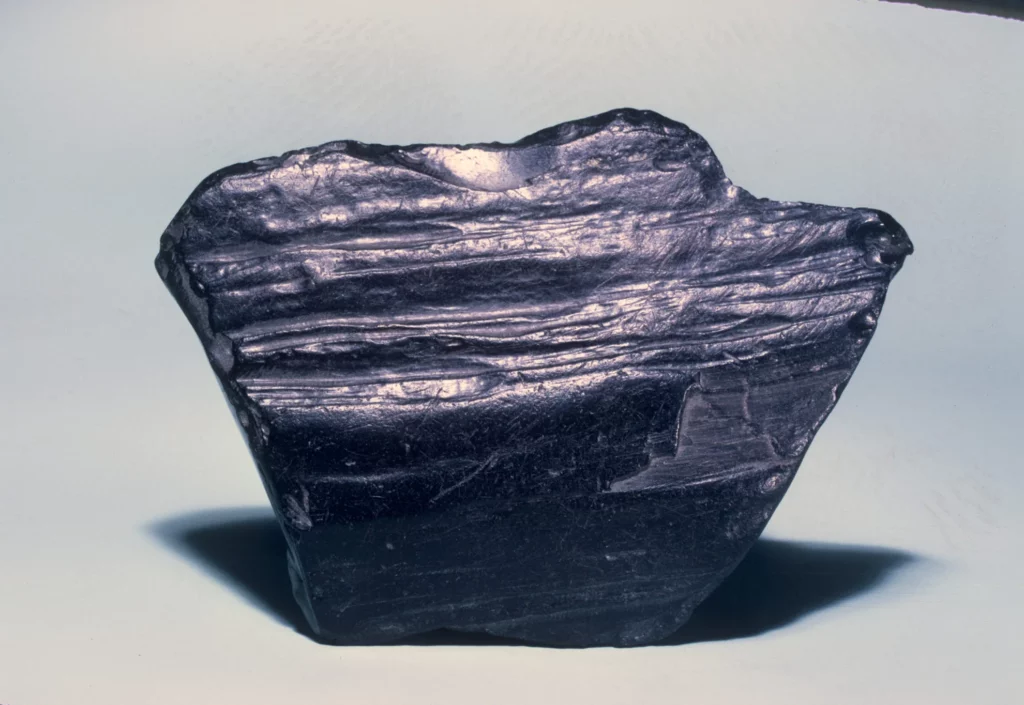
- Discovered At: Whitby, England
- Year Discovered: Has been used as far back as 10,000 BC
- Color: Black or dark brown
- Price: About $2 per gram
Jet is a type of lignite coal that was created over many millions of years from fossilized wood. Although technically not a mineral, many people consider it to be a gem due to the fact that it can be polished and faceted.
One of the most unique examples is from Whitby, England, and is known as Whitby Jet. It dates back to the early Jurassic period, which occurred 182 million years ago.
Since the Neolithic period in Ancient Britain, Jet has been carved into attractive things and was even thought to hold magical characteristics by the Romans.
This activity dates back to the Neolithic period. The term “jet-black” originates from the extremely dark color of the stone known as jet, which was commonly used during the Victorian era to manufacture mourning jewelry.
2. Blue Amber
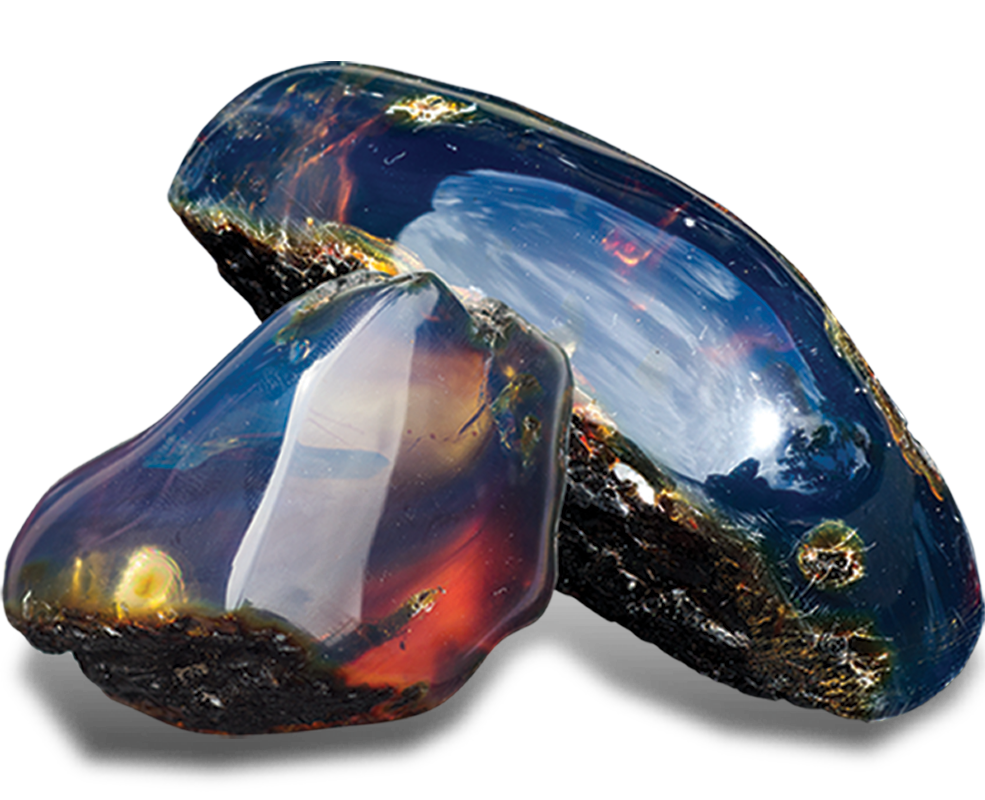
- Discovered At: Dominican Republic
- Year Discovered: Since the discovery of Dominican amber
- Color: Blue
- Price: $5-$10 per gram for smaller pieces
Amber is a natural substance that has a lovely aroma. It is the resin that has solidified over time from ancient pine trees and may contain inclusions of insects and plants that have been preserved inside it.
It has been used in jewelry for over 10,000 years, however, the blue stones are rare and are found primarily in mines around the city of Santiago in the Dominican Republic. Jewellery made from this material has been worn for over 10,000 years.
The blue coloration is assumed to be the product of an extinct species of trees undergoing incomplete combustion as a result of forest fires that occurred approximately 25 to 40 million years ago. When viewed in artificial light or when held up to the sun, the color of Blue Amber is similar to that of traditional amber.
However, when viewed in natural light, the material emits an intense blue fluorescent glow, and when viewed under UV light, the material seems to be luminous and milky-blue in color.
3. Fire Obsidian
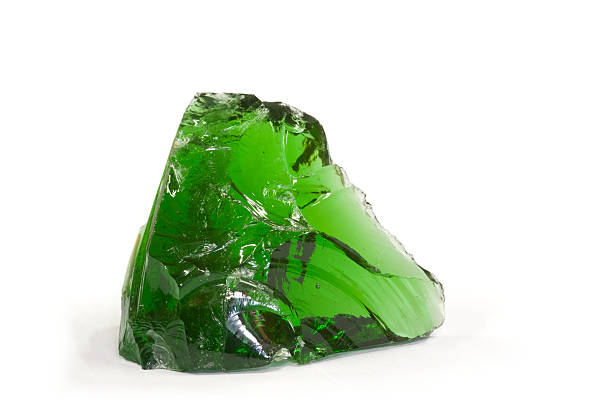
- Discovered At: Northwest USA
- Year Discovered: Relatively recently in terms of rare stones
- Color: A variety of bright and alluring colors
- Price: Approx $10/oz for unpolished
Obsidian is an interesting material in and of itself. It is a type of volcanic glass that is generated from magma or lava flows that are high in silica and are abruptly cooled by water or other components, which prevents the formation of crystals.
They can become razor-sharp when broken or chipped, and as a result, this material was frequently utilized in weapons and tools for cutting purposes.
The Pacific Northwest of the United States of America is home to an exceptionally uncommon variety of obsidian known as fire obsidian, which possesses an iridescent quality.
This stone, which exhibits wonderful colors and patterns, can be fashioned into stunning gems similar to opals through the cutting and polishing processes.
This semiprecious stone is a fantastic example of a semiprecious stone because it contains thin layers of magnetite microcrystals, which cause the colors and patterns to alter depending on the angle from which it is viewed. As a result, it is highly sought after.
4. Cinnabar
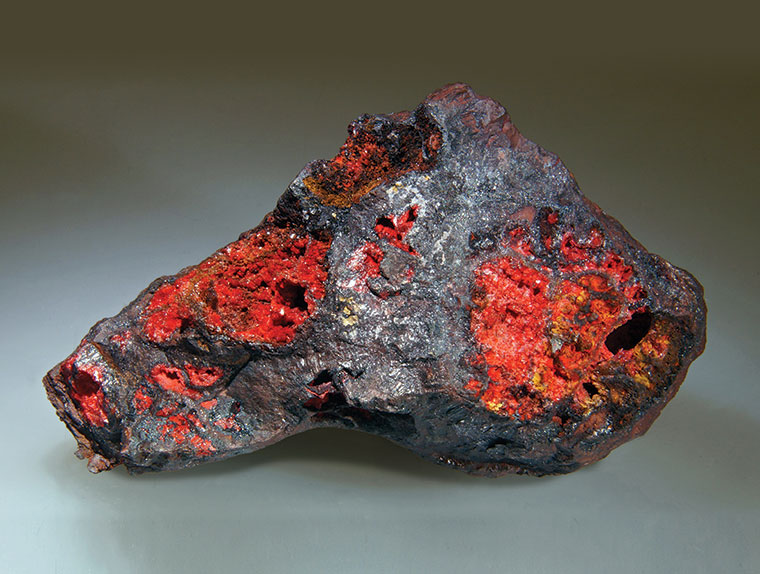
- Discovered At: All around the world in places with the right conditions
- Year Discovered: In ancient times
- Color: Bright red to brownish red
Small beads can be purchased for as little as a few dollars, but you should use extreme caution while working with this potentially hazardous stone.
Cinnabar is a fascinating and rare mineral that was highly prized by the ancient Romans due to the high mercury content of the ore as well as its application in the production of the color vermilion.
Because it comes in such a wide range of red tones, including brick, cinnamon, and bright crimson, it was also frequently employed as a decorative and ornamental element in China and South America. It is made up of mercury sulfide, and it can be found in volcanic veins as well as alkaline hot springs.
Cinnabar is exceedingly dense and heavy, making it a popular specimen among collectors. The rarest examples of cinnabar may be found in China and Spain. The Mohs scale of mineral hardness only goes up to a maximum of 2.5.
Cinnabar is somewhat soft. This mineral was once utilized as a rouge and in cosmetics; however, it is extremely poisonous and can lead to mercury poisoning.
5. Coral
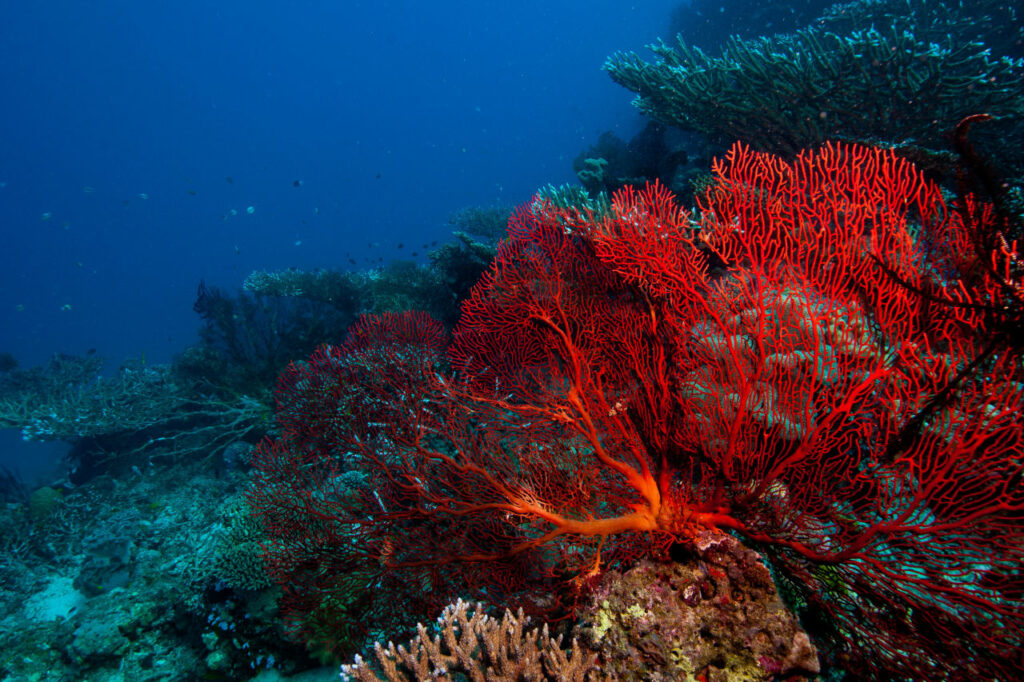
- Discovered At: In tropical oceans near the equator
- Year Discovered: New reefs are still being discovered to this day, with Italy being the most recent host
- Color: Many colors, due to algae and other factors
- Price: From a few dollars per carat to the hundreds
Red coral, also known as precious coral, is a highly colored “skeleton” that can be found on stony sea beds with little sedimentation in dark nooks and caverns.
Red coral is also known as “precious” coral. This mineral is most commonly used for jewelry since it is hard and comes in a wide spectrum of colors, from pink-orange to vivid red.
They can reach heights of one meter and have the appearance of bushes that have lost all of their leaves. The original species can be found in the Mediterranean Sea the majority of the time.
Coral, which is made up of hard calcium carbonate, can be polished until it has a glossy brilliance and was used as ornamentation by the Ancient Egyptians. It has also been discovered in prehistoric burial grounds in Europe.
This precious material is frequently fashioned into beads; it has long been held in high esteem because of the belief that it possesses enchanted qualities. There is a problem with conservation as a result of excessive mining and the harm caused by the fishing sector.
6. Lapis Lazuli
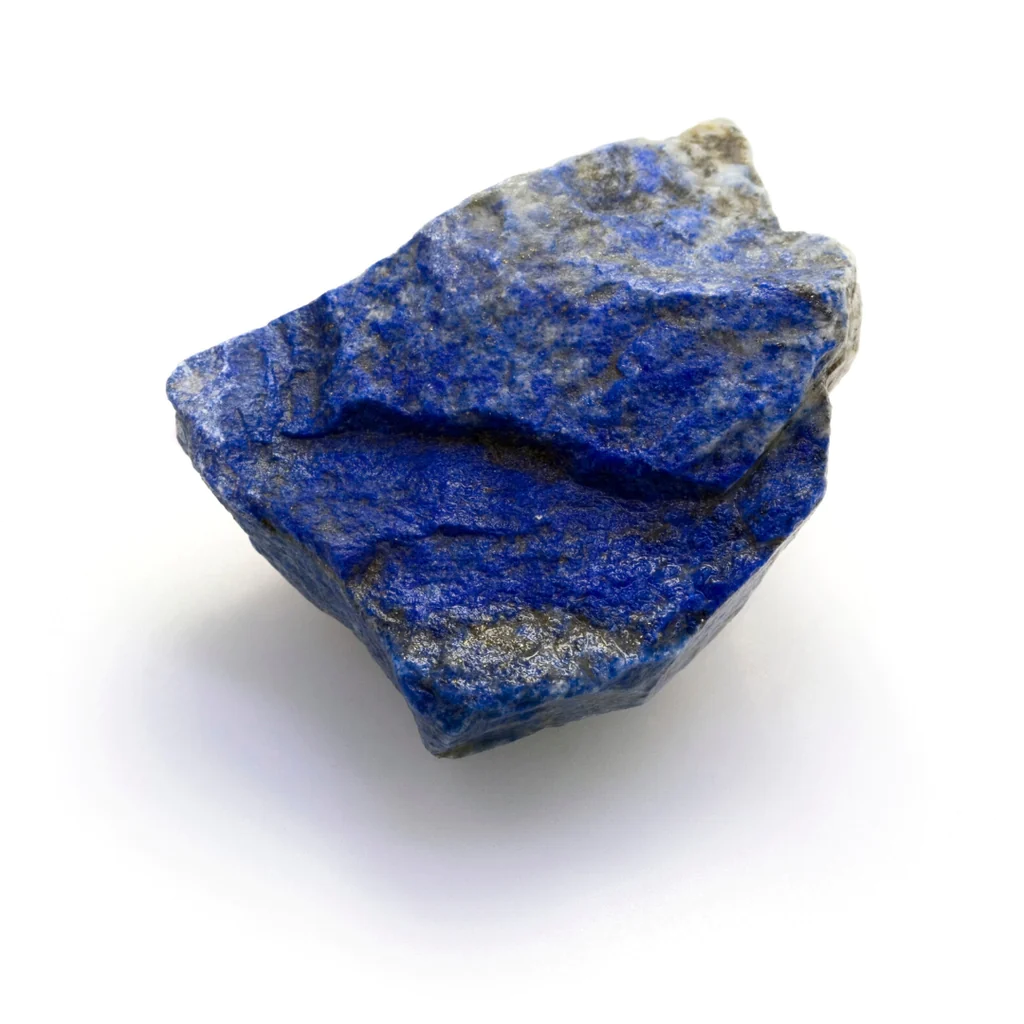
- Discovered At: Shortugai
- Year Discovered: 7000 B.C.
- Color: Blueish purple
- Price: $1 per carat for lower grades, up to $150+ for high grade
Lapis lazuli is an extremely blue rock that has been mined in countries such as Afghanistan for different uses, including as jewelry, adornment, and as a pigment dye called ultramarine. It has been used as a semi-precious stone since circa 7,000 B.C.
This silicate mineral frequently possesses inclusions of calcite, sodalite, pyrite, and various other minerals and elements. It was employed in the production of a number of creative masterpieces, including the mask worn at Tutankhamun’s funeral.
Lapis lazuli is a blue gemstone that may be found in different parts of the world, such as Russia, Chile, Italy, Mongolia, and the United States. It is most commonly discovered in caves, but it can also be polished and used to make miniature figurines, boxes, vases, and other valuable products.
The pulverized pigment from this stone was utilized by Cleopatra as eyeshadow, and it has been found in ancient burial sites and locations that have been inhabited since the Neolithic epoch.
7. Fulgurite
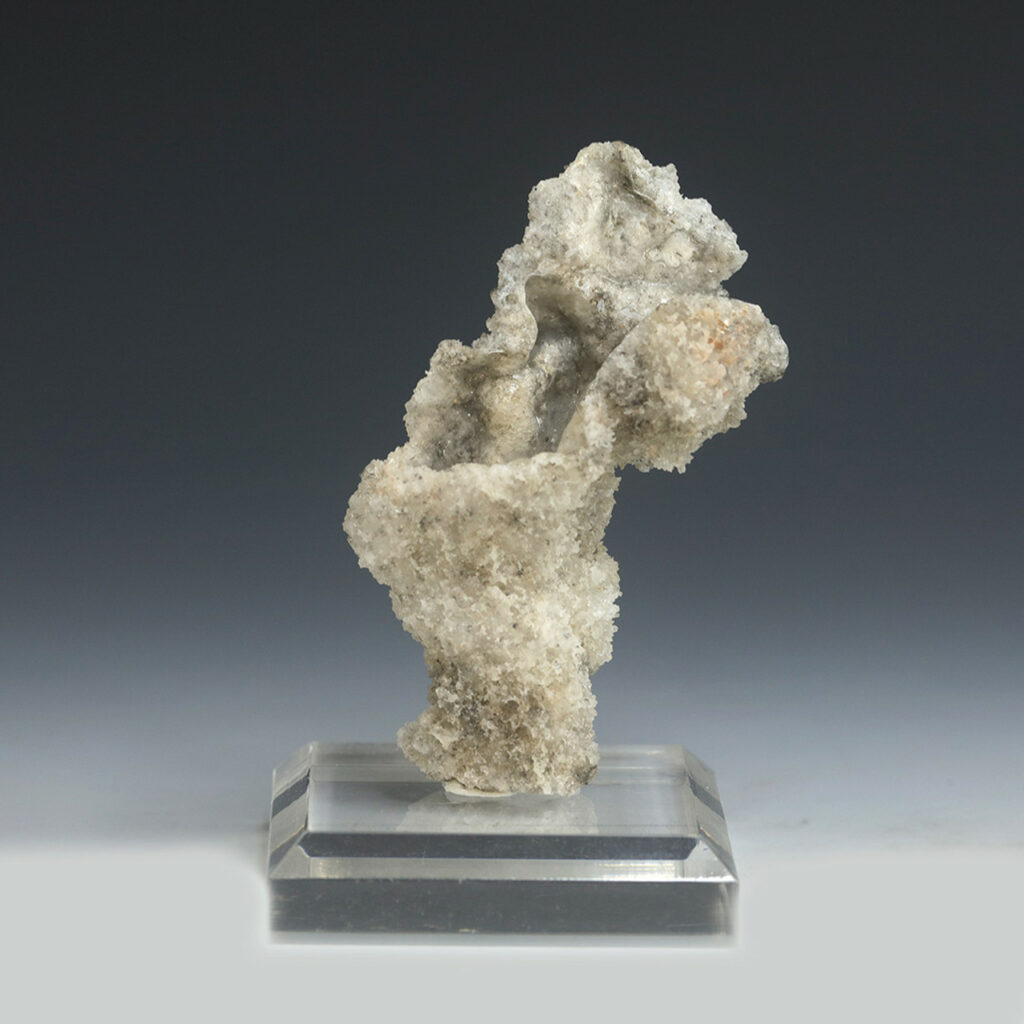
- Discovered At: Found in the Temple of Lykaian Zeus at Mount Lykaion in Greece
- Year Discovered: 1706, by a German pastor named David Hermann
- Color: Often sandy or earthy tones, it depends on where the lightning strikes
- Price: Varies greatly, but you can find common smaller specimens for a few dollars
When lightning strikes particular locations, such as sand, soil, rock, or other organic things, it creates a tube or clumps of fused matter known as fulgurites.
This phenomenon is also referred to as “fossilized lightning.” These anomalies are frequently hollow and may branch out in various directions, depending on what the lightning strike has done to them. They are highly sought after by collectors.
Fulgurites can form quite deeply within the surface of whatever is struck by lightning, and scientists can use them to piece together a history of lightning strikes in a particular place by analyzing the fulgurites.
Rare occurrences have resulted in the creation of a whole spectrum of colorful specimens, most of which are either transparent, white, or black. These specimens are made up of a variety of glasses and silicates. It is possible for the temperature of the bolt to exceed 30,000 degrees Celsius in a region with sand.
Fulgurite is the rarest stone that can be found on Earth because of its otherworldly characteristics and its dependence on the weather to form.
Even while collectors and scientists will argue that these minerals are even more fascinating than the bright and pricey jewels that we use for adornment, this is just a sample of the uncommon stones that are sometimes regarded to be semi-precious. In any case, beauty is subjective and depends entirely on the observer.
7 Rarest Stones in the World – Newshub360.net
https://www.newshub360.net/humix/video/ieNBZdWOqjf
Related Post
Credit: www.Newshub360.net
